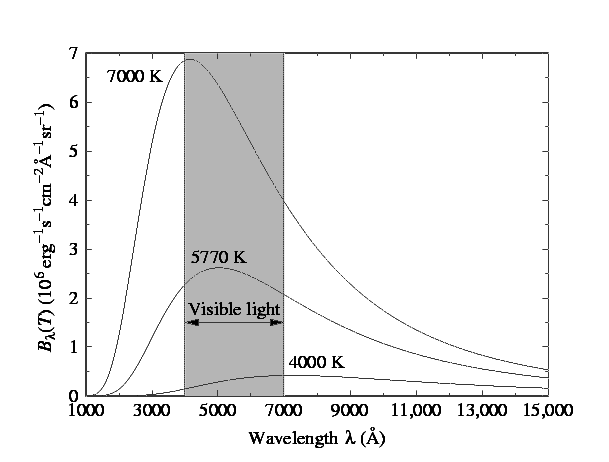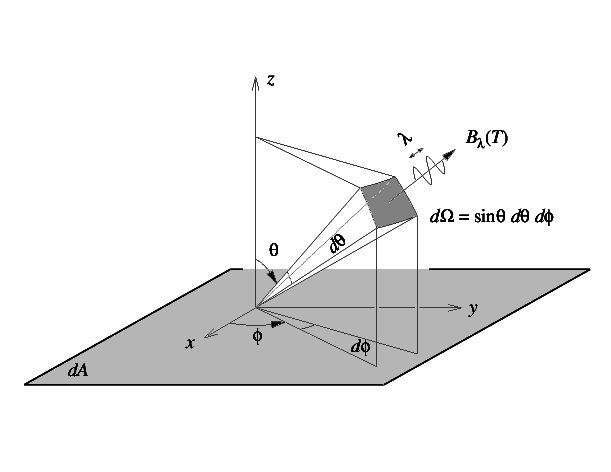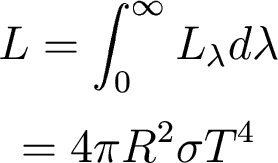
The spectrum looks like this:

What is the function which describes the shape of this spectrum? It is called the Planck function and it looks like this:

where h is Planck's constant, c is the speed of light, and k is Boltzmann's constant.
The units of the Planck function are erg/s/cm2/Angstrom/steradian. That is, it is the amount of energy (erg) put out each second (s) in a wavelength range (Angstrom) which is radiated by a surface area (cm2) into a solid angle of space (steradian). Got that?



Here's where that came from. If we integrate the Planck function over the whole surface area of the star, and over all "solid angle" of space, we will get the monochromatic luminosity:

which has units of erg/s/Angstrom. If we now integrate over all wavelengths we get the total luminosity of the star:

with units of erg/s. And that's the Stefan-Boltzmann law...
Let's see Planck's law in action, courtesy of an applet by Mike Guidry at UTKnoxville